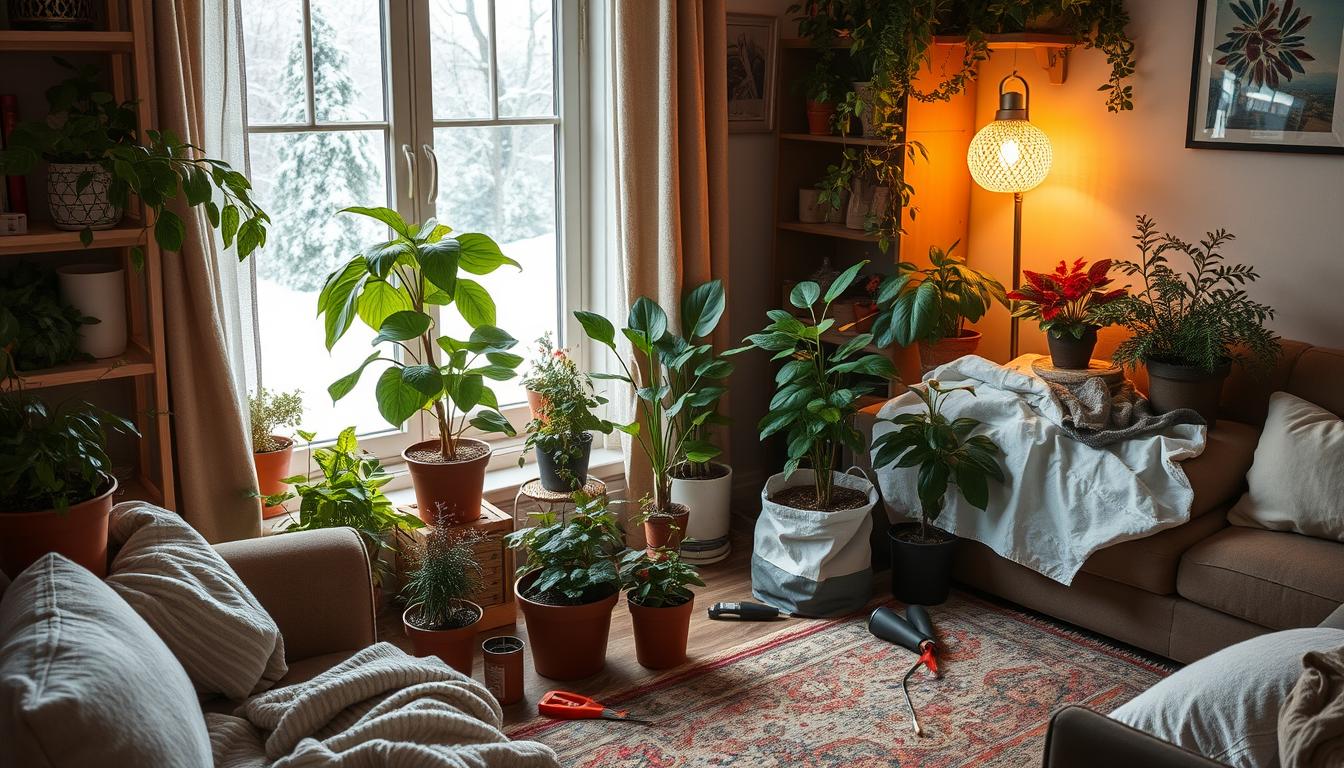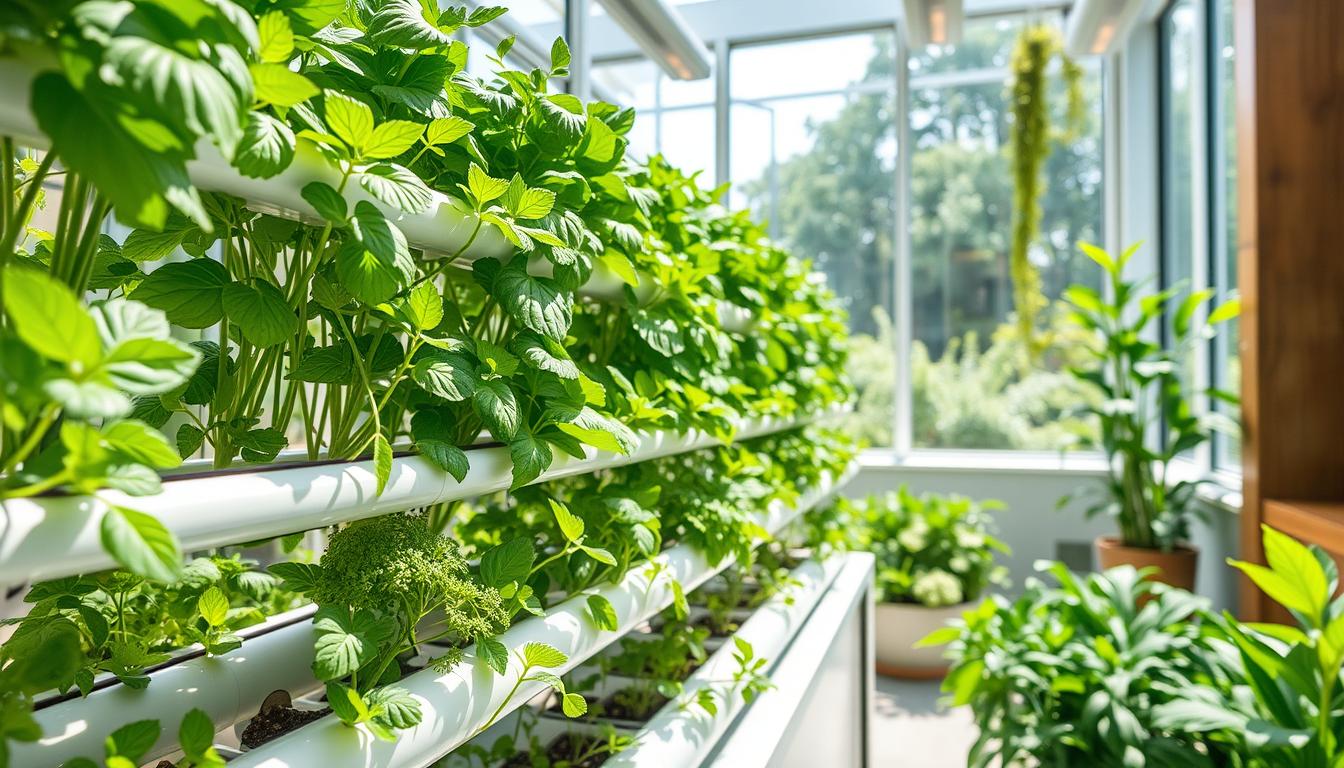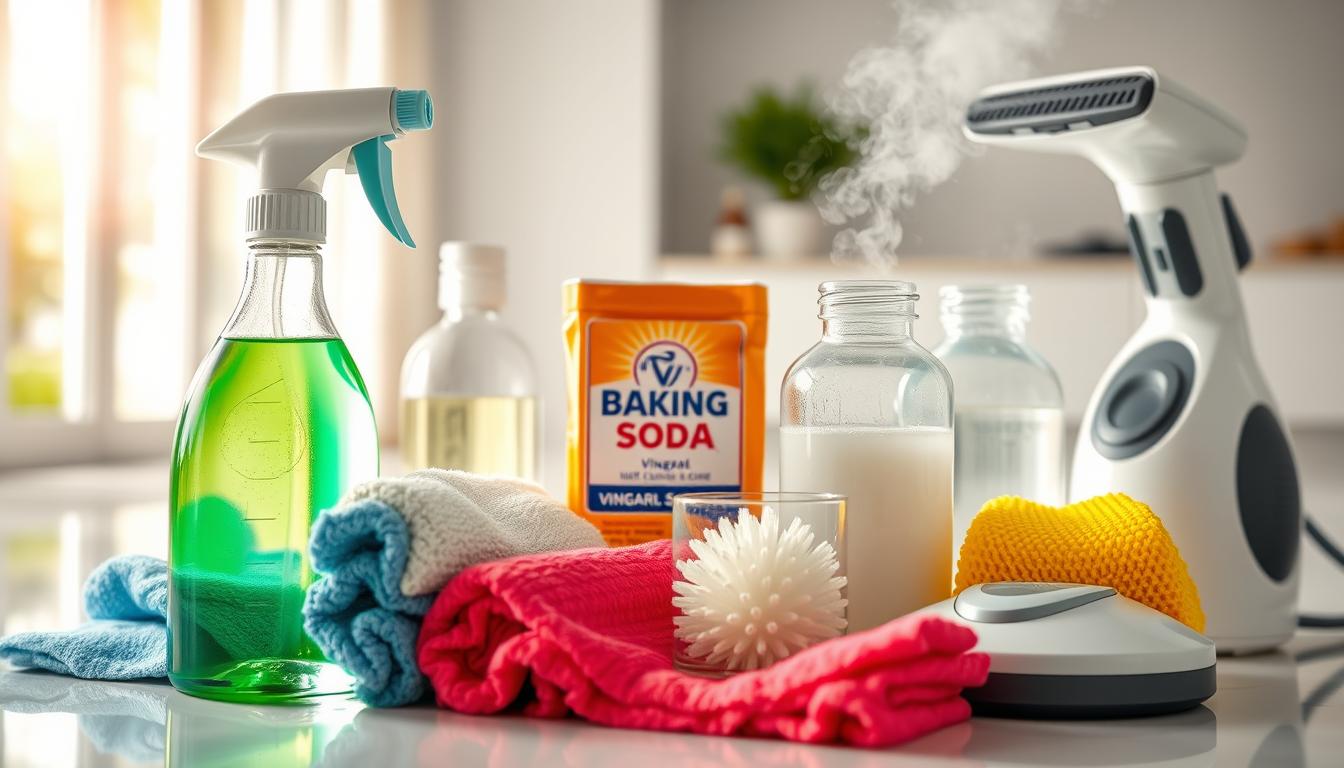
How to Bring Plants in for the Winter: 7 Essential Tips
Ensuring Proper Air Circulation
Good air movement prevents diseases and helps plants grow. Use fans or open windows (when it’s okay) to circulate air. This ensures your plants get the best conditions.
By focusing on these environmental factors, you can create a great indoor space for your plants. They will thrive and flourish, even in your home.
Any affiliate links serve to maintain this blog at no extra cost to you. Parts of this post were AI assisted.
| Environmental Factor | Optimal Conditions |
|---|---|
| Lighting | Bright, indirect sunlight or supplemental artificial lighting |
| Temperature | 65°F to 75°F, with minimal fluctuations |
| Humidity | Increased humidity levels using humidifiers, grouping plants, or misting |
| Air Circulation | Gentle air movement using fans or open windows (when appropriate) |
Watering and Maintenance Schedule Adjustments
As winter comes, you need to change how you water and care for your indoor plants. Plants usually slow down in the cold, needing less water and special care to stay alive.
Winter Watering Guidelines
For winter plant watering, it’s better to water less. Too much water can harm your plants. Here are some tips for watering your plants in winter:
- Water your plants less often, maybe half as much as in the growing season.
- Check the soil before watering. Water only when the top inch is dry.
- Use water that’s room temperature to avoid shocking the roots.
- Don’t let plants sit in water, as it can cause disease.
Humidity Management Techniques
Keeping the right indoor humidity control is key for your plants in winter. Low humidity can make leaves wilt and fall off early. Here are ways to increase humidity around your plants:
- Put plants together to make a humid spot.
- Use a pebble tray: Fill a tray with pebbles and water, then place your plants on top.
- Run a humidifier near your plants, but not too close.
- Mist your plants with a spray bottle filled with room-temperature water.
Fertilization During Dormancy
In dormant plant care, you should not fertilize much or at all. Plants need fewer nutrients when they’re not growing. Here’s what to do with fertilizing during the dormant season:
| Plant Type | Fertilization Recommendations |
|---|---|
| Succulents and cacti | Avoid fertilizing during the winter months |
| Flowering plants | Reduce fertilizer by half or use a low-nitrogen formula |
| Leafy greens | Fertilize every 2-3 months with a balanced liquid fertilizer |
By making these changes to your watering, humidity, and fertilizing, your indoor plants will do well through winter.
Common Challenges and Solutions During Winter Care
Winter care for indoor plants comes with its own set of challenges. Issues like leaf drop and pest infestations can affect your plants. It’s important to spot and fix these indoor plant problems to keep your plants healthy and alive.
Leaf drop is a common problem, often due to less light and dry air. To solve this, mist your plants often or use a pebble tray to add humidity. Grow lights can also help make up for the lack of sunlight.
Pests can be a big problem in the warm, cozy indoor space. Regular checks and quick action with natural pest control can help fight off winter gardening issues.
Finally, keeping an eye on your plants’ health is key in winter. Signs of stress, like wilting or color changes, need attention. Adjusting how often you water, the temperature, and air flow can help keep your plants in top shape during the cold months.
| Common Issue | Possible Causes | Solutions |
|---|---|---|
| Leaf Drop | – Lower light levels – Dry air | – Increase humidity – Use supplemental lighting |
| Pest Infestations | – Warm, sheltered conditions | – Inspect plants regularly – Treat with natural or organic methods |
| Plant Stress | – Improper watering – Temperature fluctuations – Poor air circulation | – Adjust watering schedule – Maintain optimal temperature – Improve air flow |
By tackling these common indoor plant problems, you can keep your plants thriving through winter. This way, they’ll be ready to go back outside in the spring.
Specific Care Instructions for Popular House Plants
As winter comes, it’s key to give your indoor plants the right care. Plants like succulents, ferns, and tropical ones need special attention during the cold months. Knowing what each plant needs helps them stay healthy and happy indoors.
Succulent Winter are
Succulents, like jade plants and echeverias, need the right mix of sunlight, water, and warmth in winter. Water them less to avoid root rot. Place them in a sunny spot for at least 6 hours a day. Keep their indoor home between 50-70°F to match their natural habitat.
Fern Winter Care
Ferns, like Boston ferns and maidenhair ferns, love humid air. Mist their leaves often or use a pebble tray to add moisture. Keep the soil moist but not too wet. Place them in a bright spot but away from direct heat.
Tropical Plant Winter Care
Tropical plants, such as monstera and philodendrons, need warmth and high humidity in winter. Use a humidifier or group plants together for a cozy spot. Water them often but let the soil dry a bit between waterings. Give them bright, indirect light to prevent them from getting too long.
By following these care tips, your houseplants will smoothly move into winter. They’ll keep your indoor space beautiful and lively.
“The key to successful indoor plant care in winter is paying close attention to the unique needs of each species and adjusting your routine accordingly.”
Conclusion
Successfully moving plants indoors for winter needs careful planning and upkeep. Knowing when to move, using the right tools, and keeping an eye on temperature changes are key. This ensures your plants adjust well to their new home.
Following the 7 tips from this article will help your plants thrive all winter. This includes checking for pests and creating the best indoor growing space. Adjusting watering and care for indoor conditions is also crucial. Stay alert for any problems that might come up.
With the right indoor gardening strategies, your plants can do well even in cold weather. This prepares them for a strong comeback when spring comes. Taking good care of them now means you’ll enjoy their beauty and benefits all year. I hope this was helpful!






-
-
12 months
Tagged Aquaponics, Grow lights, Hydroponic gardening, Hydroponic systems, Indoor gardening